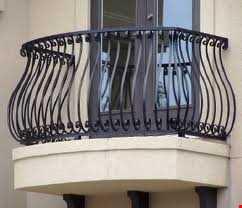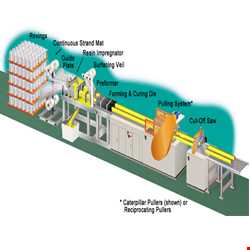Products
Pultrusion Product Range
Pultrusion is the most cost-effective method for the production of fibre-reinforced composite structural profiles. It brings high performance composites down to commercial products such as light-weight corrosion free structures, electrical non-conductive systems, off-shore platforms and many other innovative new products. Our pultrusion products range include round rods, rectangles, squares, ‘I’ sections, ‘T’ sections, angles, channels, dog bone profiles, dove tail sticks and spacers, corner profiles, hallow sections, etc.
Applications:
1. In transformer industries as spacers, runners, coil winders, wedges, dove tail sticks and spacers, threaded rods, etc.
2. In switchgear industries as operating rods, links, etc.
3. In chemical industries as handrails,ladders walkways, floor gratings, supports, cable trays, pipe supports/ racks etc.
4. In construction industries as load bearing members, supports, etc
5. Construction of cooling towers
6. Mobile towers & structures
7. Tank/reactor stiffeners, girders, agitator/ motor mounting on reactors
8. Landscape decorative items like bench strips, light poles
Physical Properties -Thermal conductivity of composites is affected by both matrix and fibre characteristics. Generally, the glass & organic fibre reinforced composites are excellent insulators for thermal and electrical environments. The use of conductive carbon fibres, however, results in composites that exhibit thermal and electrical conductivity to some extent; this reduces their effectiveness as insulators but creates opportunities because of their static charge and heat dissipation characteristics.
Specific gravity is a key consideration when strength-to-weight ratios are important as in aircraft and aerospace applications. Carbon and aramid-reinforced composites excel because of their low specific gravities and high strength & stiffness characteristics.
The impact resistance of organic fibre reinforced composite is quite high, making them suitable for energy absorption applications. Fibre glass-reinforced composites are relatively poor in impact performance compared to organic fibres, but are superior to carbon-reinforced composites. Composites using carbon fibre rely on the toughness of the resin matrix for impact properties.
Chemical & Corrosion resistance characteristics of pultruded composites are attributed to the properties of resin used. Chemical & corrosion attack can occur at the product surface or at the end. The presence of a resin rich barrier layer on the surface provides greater degree of corrosion resistance. To achieve a resin-rich surface, a synthetic veil or mat, typically of polyester fibre, is used on the surface of the products when pultruded. The layer can range from 0.15 to 1.00 mm thick, depending on the thickness of the material used.
The end cut of the profile is particularly vulnerable to corrosion because fibres are exposed to the environment. Therefore, it is a common practice is to dip-coat the end cuts of pultruded profile to seal them from corrosive attack. If this is not done, the corrosion resistance of the fibre itself becomes an important consideration because the resin does not effectively protect the fibre from attack along the fibre-resin interface at open ends.

